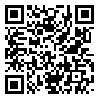Fri, Sep 20, 2024
[Archive]
Volume 12, Issue 4 (Autumn 2021)
Caspian J Intern Med 2021, 12(4): 544-550 |
Back to browse issues page
Download citation:
BibTeX | RIS | EndNote | Medlars | ProCite | Reference Manager | RefWorks
Send citation to:



BibTeX | RIS | EndNote | Medlars | ProCite | Reference Manager | RefWorks
Send citation to:
Tabasi S, Parkhideh S, Roshandel E, Karami S, Saeedi A, Jabbari A et al . The association of disease type, pre-transplant hemoglobin level and platelet count with transfusion requirement after autologous hematopoietic stem cell transplantation. Caspian J Intern Med 2021; 12 (4) :544-550
URL: http://caspjim.com/article-1-2418-en.html
URL: http://caspjim.com/article-1-2418-en.html
Shabnam Tabasi 

 , Sayeh Parkhideh
, Sayeh Parkhideh 

 , Elham Roshandel
, Elham Roshandel 

 , Samira Karami
, Samira Karami 

 , Anahita Saeedi
, Anahita Saeedi 

 , Ali Jabbari
, Ali Jabbari 

 , Abbas Hajifathali *
, Abbas Hajifathali * 




 , Sayeh Parkhideh
, Sayeh Parkhideh 

 , Elham Roshandel
, Elham Roshandel 

 , Samira Karami
, Samira Karami 

 , Anahita Saeedi
, Anahita Saeedi 

 , Ali Jabbari
, Ali Jabbari 

 , Abbas Hajifathali *
, Abbas Hajifathali * 


Hematopoietic Stem Cell Research Center, Shahid Beheshti University of Medical Sciences, Tehran, Iran , hajifathali@yahoo.com
Abstract: (3529 Views)
Background: Autologous hematopoietic stem cell transplantation (auto-HSCT) has become an effective treatment for a wide range of hematologic and non-hematologic diseases. Patients undergoing HSCT might require multiple platelets and red blood cell (RBC) transfusions during aplasia phase until engraftment, which could profoundly affect patients’ conditions. Identification of risk factors associated with blood product requirements could help in decreasing transfusion-related complications. We evaluated the association of disease type, pre-transplant hemoglobin level, and pre-transplant platelet count with RBC/platelet transfusion requirement after auto-HSCT.
Methods: In this retrospective study, 324 patients diagnosed with multiple myeloma (MM), Hodgkin disease (HD), and non-Hodgkin lymphoma (NHL) and underwent auto-HSCT were included. The associations of disease type, pre-transplant hemoglobin level, and platelet count with post-transplant packed cell and single-/random-donor platelet transfusions were evaluated.
Results: Our study results illustrated that the higher pre-transplant hemoglobin level significantly decreased the post-HSCT requirement for packed cell (IRR=0.81, [CI: 9.73-0.90], P=0.0001), while the pre-transplant platelet showed no significant relationship with platelet requirement after HSCT. HD was associated with increment in packed cell (IRR=2.04, [CI: 1.35-3.08], P=0.001) and single donor platelet (IRR=1.39, [CI: 1.09-1.78], P=0.008) requirement after transplant. The trends showed that a higher platelet level led to a lower need for platelet transfusion.
Conclusion: Pre-transplant hemoglobin level could be valuable markers for predicting post-HSCT RBC requirements and might be beneficial for better management of transfusion requirements to minimize the transfusion-related complications. Patients with HD seem to be more prone to blood product requirements post-transplant.
Methods: In this retrospective study, 324 patients diagnosed with multiple myeloma (MM), Hodgkin disease (HD), and non-Hodgkin lymphoma (NHL) and underwent auto-HSCT were included. The associations of disease type, pre-transplant hemoglobin level, and platelet count with post-transplant packed cell and single-/random-donor platelet transfusions were evaluated.
Results: Our study results illustrated that the higher pre-transplant hemoglobin level significantly decreased the post-HSCT requirement for packed cell (IRR=0.81, [CI: 9.73-0.90], P=0.0001), while the pre-transplant platelet showed no significant relationship with platelet requirement after HSCT. HD was associated with increment in packed cell (IRR=2.04, [CI: 1.35-3.08], P=0.001) and single donor platelet (IRR=1.39, [CI: 1.09-1.78], P=0.008) requirement after transplant. The trends showed that a higher platelet level led to a lower need for platelet transfusion.
Conclusion: Pre-transplant hemoglobin level could be valuable markers for predicting post-HSCT RBC requirements and might be beneficial for better management of transfusion requirements to minimize the transfusion-related complications. Patients with HD seem to be more prone to blood product requirements post-transplant.
Type of Study: Original Article |
Subject:
Hematology
Received: 2020/07/12 | Accepted: 2021/02/15 | Published: 2021/09/19
Received: 2020/07/12 | Accepted: 2021/02/15 | Published: 2021/09/19
Send email to the article author
| Rights and permissions | |
 |
This work is licensed under a Creative Commons Attribution-NonCommercial 4.0 International License. |




